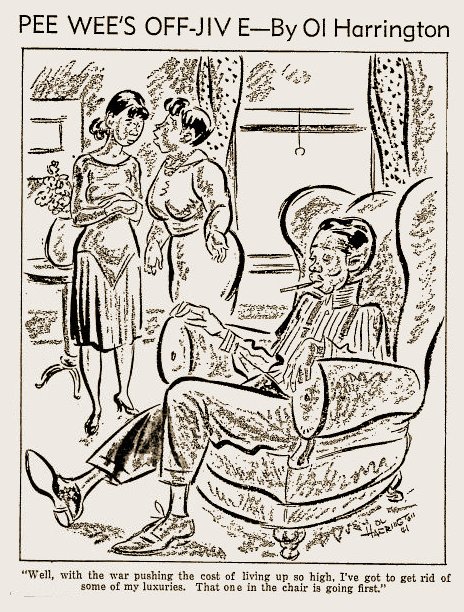Oliver Wendell Harrington (Ollie Harrington), born on February 14, 1912, in Valhalla, New York, was not only an American cartoonist but also a fearless advocate against racism and a fervent supporter of civil rights. His life, spanning from the Harlem Renaissance to the Civil Rights Movement, was marked by his dedication to using his artistic talents to bring attention to the issues of racial injustice. Harrington’s story is one of resilience, activism, and the pursuit of justice.
Oliver Wendell Harrington
Born: February 14, 1912, Valhalla, New York
Died: November 2, 1995, Berlin, Germany
Nationality: American
Occupation: Cartoonist
Notable Works
- Dark Laughter / Bootsie
- Jive Gray (1941–1951)
Publications
- Dark Laughter: The Satiric Art of Oliver W. Harrington (1993)
- Why I Left America and Other Essays (1993)
- Bootsie and Others: A Selection of Cartoons (1958)
- Hezekiah Horton (1955)
- Terror in Tennessee: The Truth about the Columbia Outrages (1946)
Exhibitions
“Dark Laughter Revisited: The Life and Times of Ollie Harrington” (2021–2022)
Early Life and Education
Oliver Wendell Harrington was the eldest of five children born to Herbert and Euzsenie Turat Harrington. His background was richly diverse, with an African-American father and a Jewish mother from Budapest. Harrington grew up in the vibrant and diverse community of South Bronx, where he started developing his artistic skills to express his frustrations with racism. His early experiences fueled his commitment to fighting against racial injustice through his art.
In 1929, Harrington graduated from DeWitt Clinton High School in the Bronx, and his journey into the world of art continued as he pursued a degree in Fine Arts at Yale University, graduating in 1940. This period at Yale was crucial in shaping his artistic vision and preparing him for the impactful career ahead.
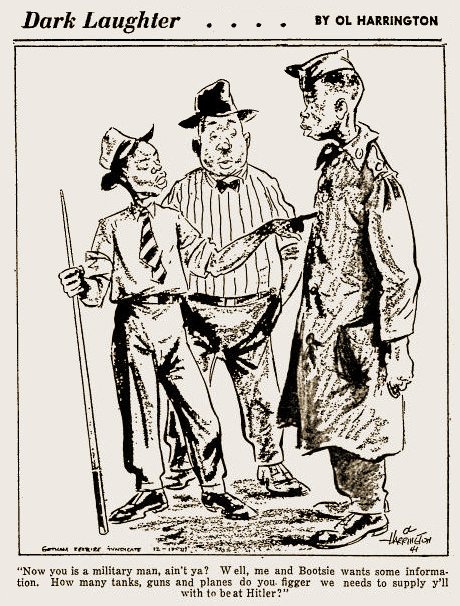
Cartooning Career: Dark Laughter and Bootsie
Harrington’s immersion in the Harlem Renaissance allowed his talent to shine. Ted Poston, the city editor for the Amsterdam News, recognized Harrington’s exceptional cartooning skills and political satire. In 1935, he started “Dark Laughter,” a single-panel cartoon that evolved into “Bootsie,” a strip that depicted the life of an ordinary African American dealing with the harsh realities of racism in the United States. Harrington described Bootsie as “a jolly, rather well-fed but soulful character.”
His contributions didn’t stop there. In 1941, Harrington launched “Jive Gray,” a weekly adventure comic strip featuring an African-American aviator. This strip continued until Harrington’s move to Paris. After World War II, he joined the NAACP, focusing on public relations to aid the reintegration of Black veterans who faced discrimination upon returning home. However, his political views led to a parting of ways with the NAACP in 1947.
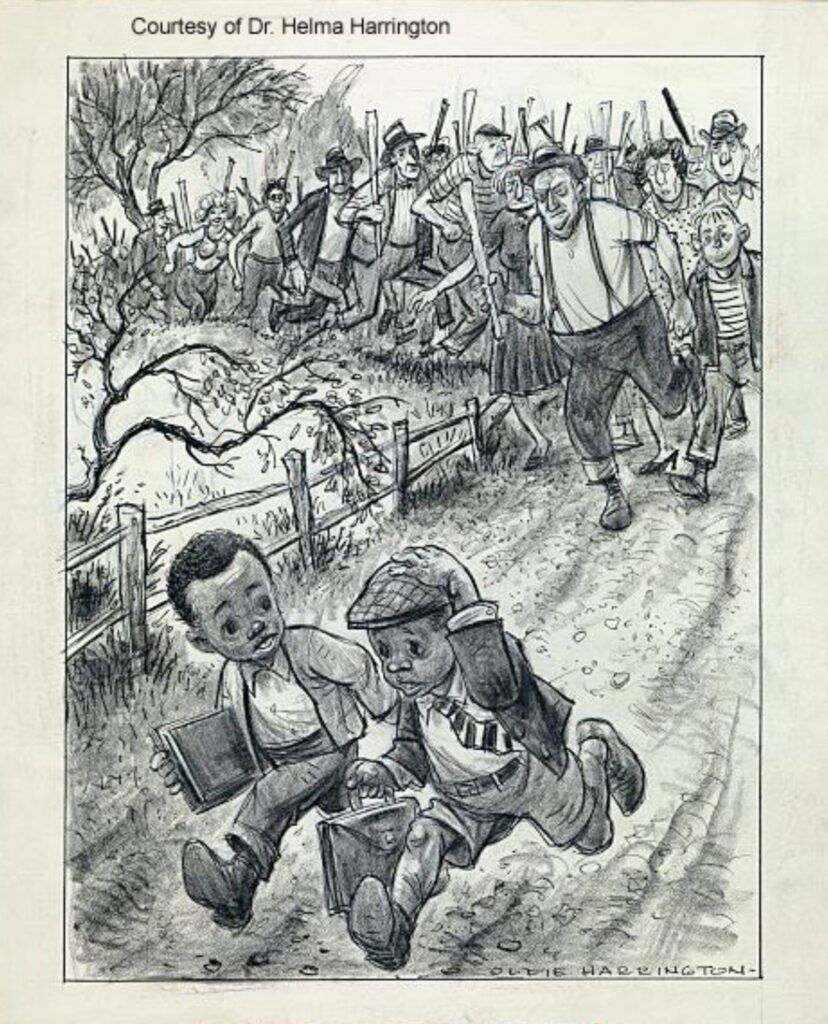
Cartoonist and essayist
Satirist and political cartoonist Oliver Harrington is practically unknown within the United States, except to readers of black newspapers of the 1930s and 1940s. Since the Second World War, however, he has continued to produce a huge body of work, much of which deals with issues of race and class, from his home bases in Paris and later in East Germany.
Throughout his career, Harrington has been at the center of the African American intellectual and artistic community, counting among his closest friends such as luminaries as writers Richard Wright, Chester Himes, and Langston Hughes.
Although he never gained as much publicity as did several other members of his social circle, Harrington was frequently its focal point. With the publication in the 1990s of both a book of essays and a book of cartoons spanning several decades, Harrington is finally gaining the degree of international notice that those familiar with his work from his early days as a political cartoonist have long believed he deserves.

Harrington was born in Valhalla, New York on Valentine’s Day, 1912. His family life reflected the diversity of its members. His father had come from North Carolina to seek work on the many construction projects underway in the area. His mother was a Hungarian Jew from Budapest.
This combination created an interesting household flavor that combined the European and American influences of the two parents. The Valhalla community itself was remarkably diverse, with many different ethnic groups represented. The racial blend was so complete that “Harrington grew up unable to remember which of his friends were white or black,” as M. Thomas Inge wrote in his introduction to Dark Laughter: The Satiric Art of Oliver W. Harrington.
Harrington’s first brushes with racism took place after his family, which included two brothers and a sister, moved to the South Bronx when he was about seven years old. Although his new neighborhood was as racially mixed as his old one, the relations between ethnic groups were not as harmonious. An event that took place at school when Harrington was in sixth grade both shaped his views on racism and provided the spark for his future as an artist.
The teacher, whom Harrington has referred to as Miss McCoy, ordered Harrington and the one other African American boy in the class to the front of the room. She then pointed a finger at the pair and said to the rest of the class, “Never, never forget these two belong in the trash.” The class erupted in.
Civil Rights Advocacy
World War II took Harrington to Europe and North Africa as a correspondent for the Pittsburgh Courier. During this time, he met Walter White, the executive secretary of the NAACP. Post-war, White hired Harrington to develop the organization’s public relations department, turning him into a visible advocate for civil rights.
Harrington’s impactful publication, “Terror in Tennessee,” exposed the increased lynching violence in the post-WWII South. This controversial piece sparked a debate with U.S. Attorney General Tom C. Clark, highlighting the government’s failure to address racially motivated violence.
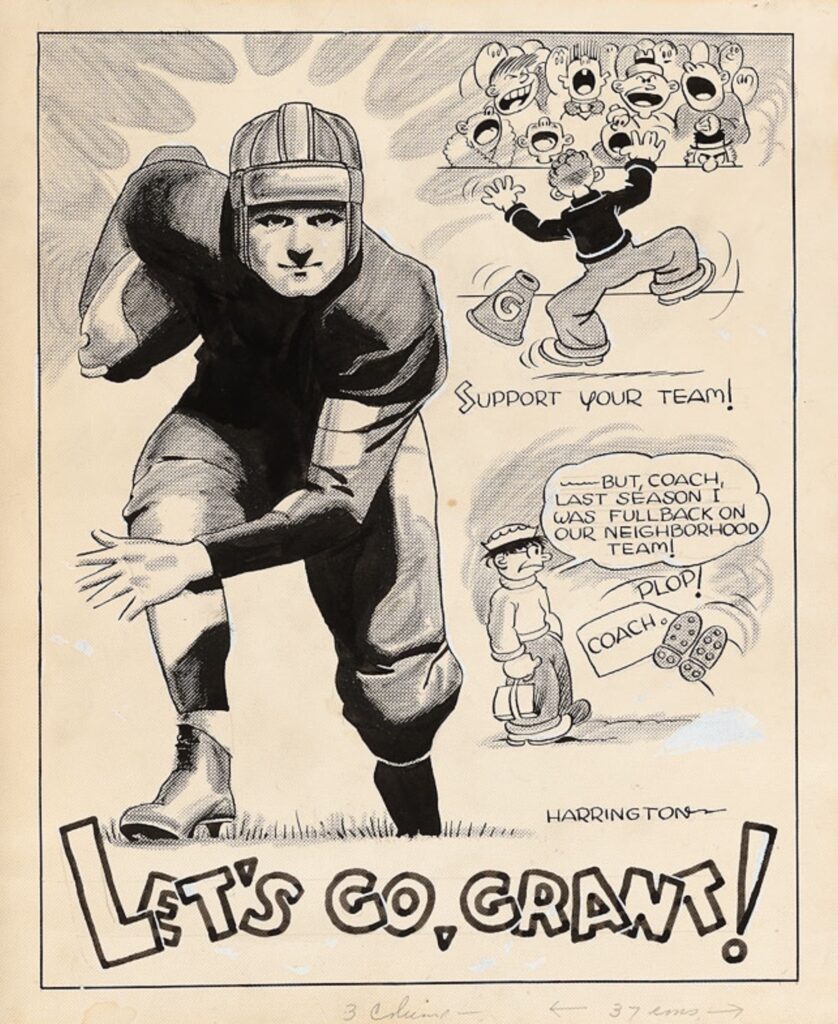
Paris: Exile and Creative Community
In 1947, Harrington decided to return to cartooning after leaving the NAACP. However, his social activism and prominence attracted scrutiny from the FBI and the House Un-American Activities Committee. Seeking refuge from government scrutiny, Harrington relocated to Paris in 1951, joining a thriving community of African-American expatriate writers and artists, including James Baldwin, Chester Himes, and his close friend Richard Wright.
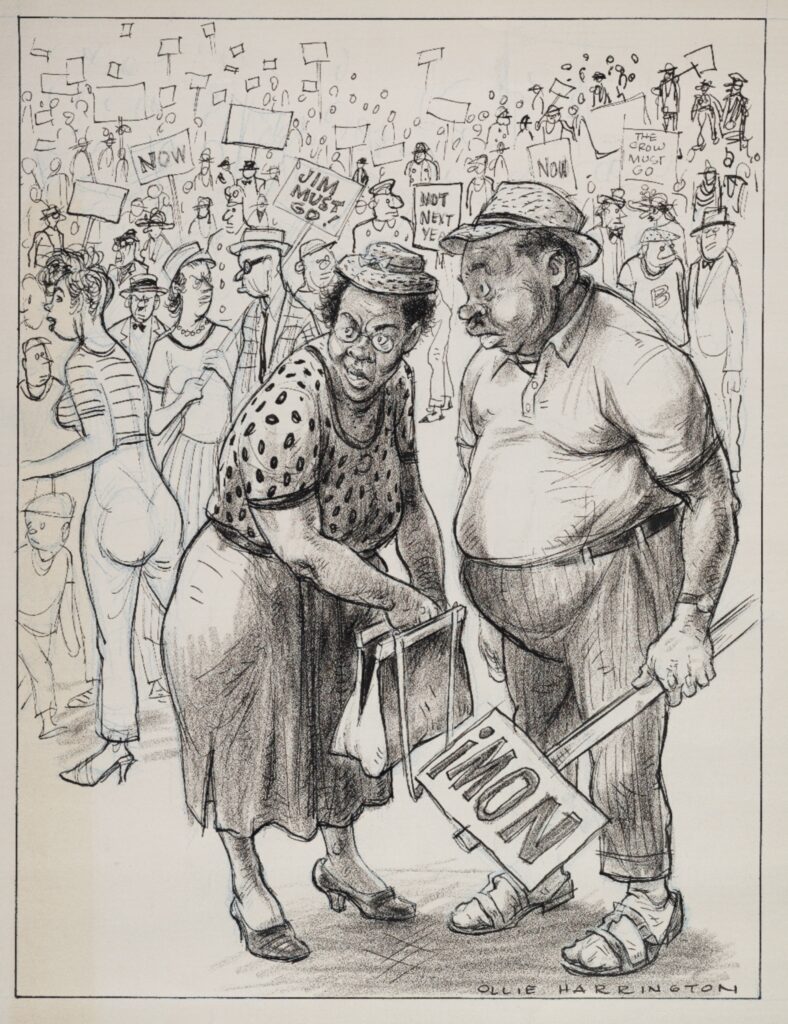
Germany: Seeking Asylum and Legacy
The death of Richard Wright in 1960 deeply affected Harrington, leading him to suspect foul play and a deliberate campaign of harassment against expatriates. In 1961, he sought political asylum in East Germany, where he spent the rest of his life. Harrington found work and gained a cult following, contributing to publications like Eulenspiegel, Das Magazin, and the Daily Worker.
Despite living far from his homeland, Oliver Wendell Harrington continued to be an influential voice against racial injustice. His work left an indelible mark on the history of civil rights activism. Harrington’s legacy is celebrated through exhibitions like “Dark Laughter Revisited: The Life and Times of Ollie Harrington,” a testament to his enduring impact on cartooning and the fight for equality.
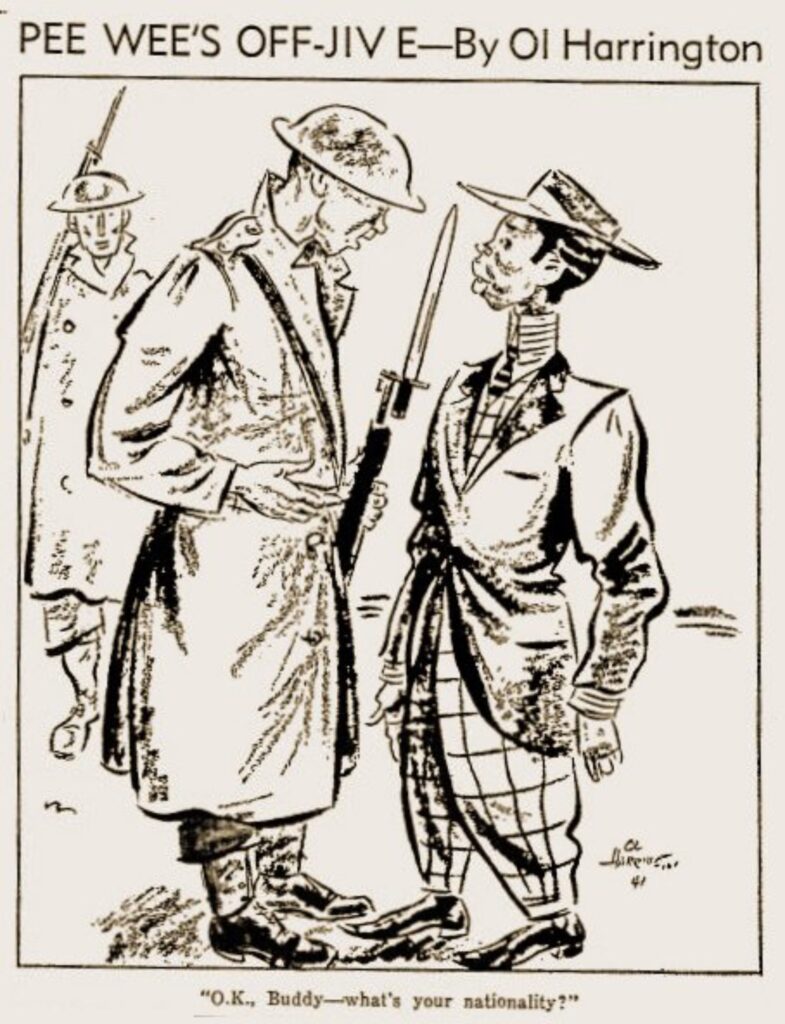
Personal Life and Publications
His dedication to his family marked Harrington’s personal life. He had four children, and even after emigrating to East Berlin, he continued to be connected with his roots. His youngest son was born several years after marrying German journalist Helma Richter.
Harrington’s publications, including “Dark Laughter: The Satiric Art of Oliver W. Harrington” and “Why I Left America and Other Essays,” reflect his artistic prowess and introspective exploration of the socio-political landscape. “Laughing on the Outside: The Intelligent White Reader’s Guide to Negro Tales and Humor” and “Bootsie and Others: A Selection of Cartoons” showcase the depth and breadth of his contributions.
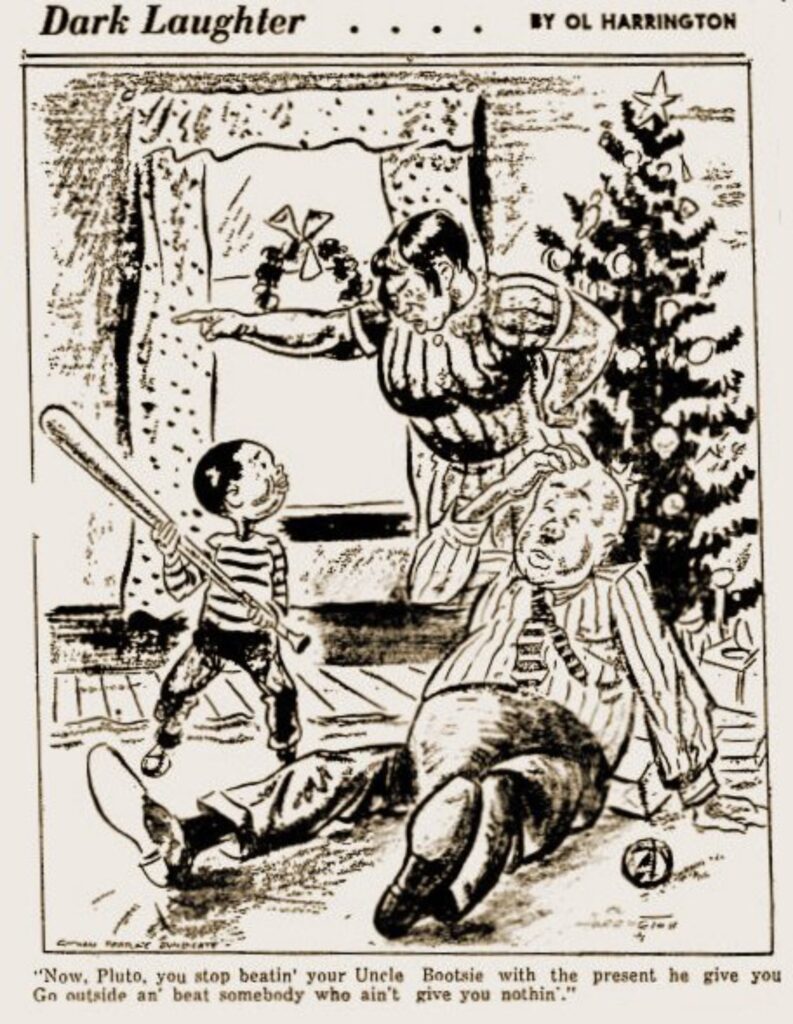
Exhibitions and Legacy
The exhibition “Dark Laughter Revisited: The Life and Times of Ollie Harrington,” held at the Billy Ireland Cartoon Library & Museum, Ohio State University, from 2021 to 2022, is a testament to Harrington’s enduring legacy. It brings to light the cartoons and the life and times of a man who dedicated his artistic career to challenging racial injustice.
With his pen and ink, Oliver Wendell Harrington became a powerful force against racism, fearlessly confronting issues that plagued society. His decision to seek asylum in East Germany was a bold step driven by a commitment to his principles. Harrington’s life story is one of artistic brilliance, resilience, and an unwavering commitment to the fight for civil rights, making him a lasting symbol of courage and creative activism.
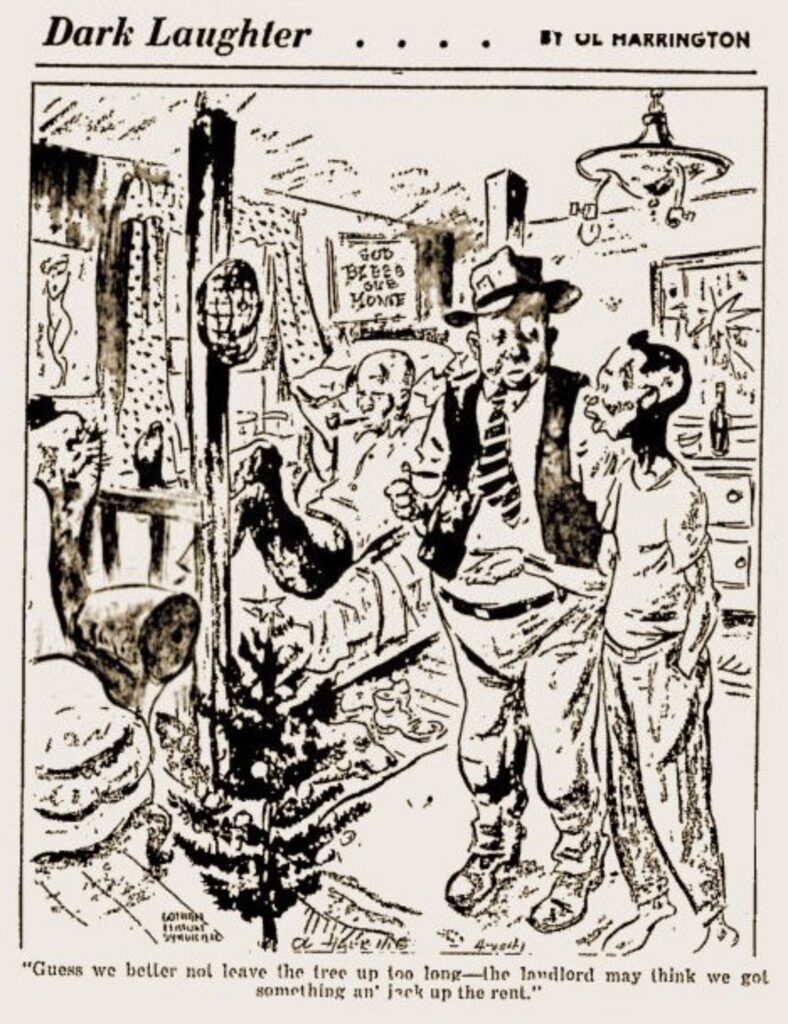
At a Glance…
Born Oliver Wendell Harrington, February 14, 1912, in Valhalla, NY; son of a day laborer from North Carolina, and Eugenia Turret, a Jewish woman from Budapest, Hungary; emigrated to France, 1951, then to East Germany, 1961; married Helma (a German economist and journalist) Richter; children: Oliver Jr. Education: Attended National Academy of Design; Yale University, BFA, 1940; further study toward MFA at Yale. Politics: Progressive.
Freelance political cartoonist, 1932—; created Bootsie character, 1935; The People’s Voice, art director, 1942-43; Pittsburgh Courier, war correspondent, 1944; National Association for the Advancement of Colored People (NAACP), director of public relations, 1946-47; illustrated The Runaway Elephant, 1950; contributor to several East German publications, 1961—; contributor to Daily World (New York), 1968-late 1970s; Michigan State University, School of Journalism, artist-in-residence, 1994.
Awards: American Institute of Graphic Arts award, for The Runaway Elephant, 1951; Swann Foundation award for special achievement, 1992.
Addresses: Home —Esthenbech Strasse 7, 0-1195 Berlin, Germany. Publisher —University Press of Mississippi, 3825 Ridgewood Rd., Jackson, Ml 39211-6492.
laughter, and Harrington, not surprisingly, was crushed. Over the days that followed, he found that his recovery was aided by drawing pictures of violent accidents involving Miss McCoy. The drawings made him feel so much better that he began to think about becoming a cartoonist.
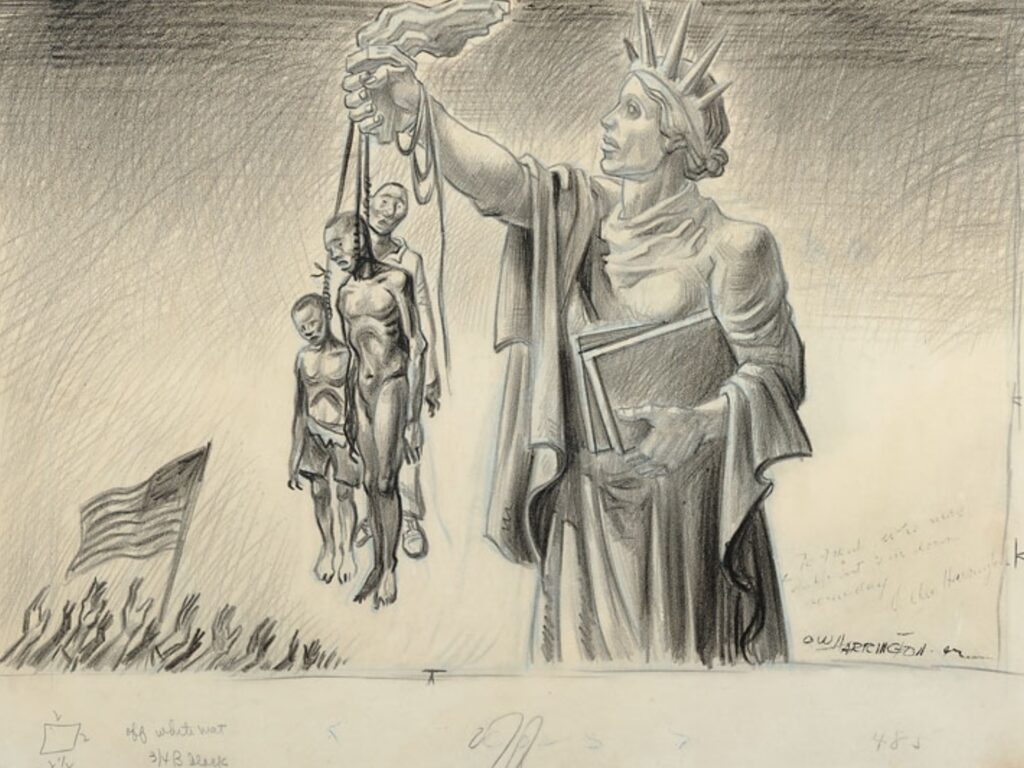
Joined Thriving Harlem Scene
After graduating from DeWitt Clinton High School in 1929, Harrington moved to Harlem, which was in the later phase of its famous “Renaissance.” There he made the acquaintance of several of the most important black writers in America, and he became particularly close friends with Langston Hughes, who served as a mentor to him. Harrington was able to support himself doing free-lance artwork while taking classes at the National Academy of Design. His first professional success came in 1932 when he managed to place political cartoons in two black newspapers, The National News and the New York State Contender.
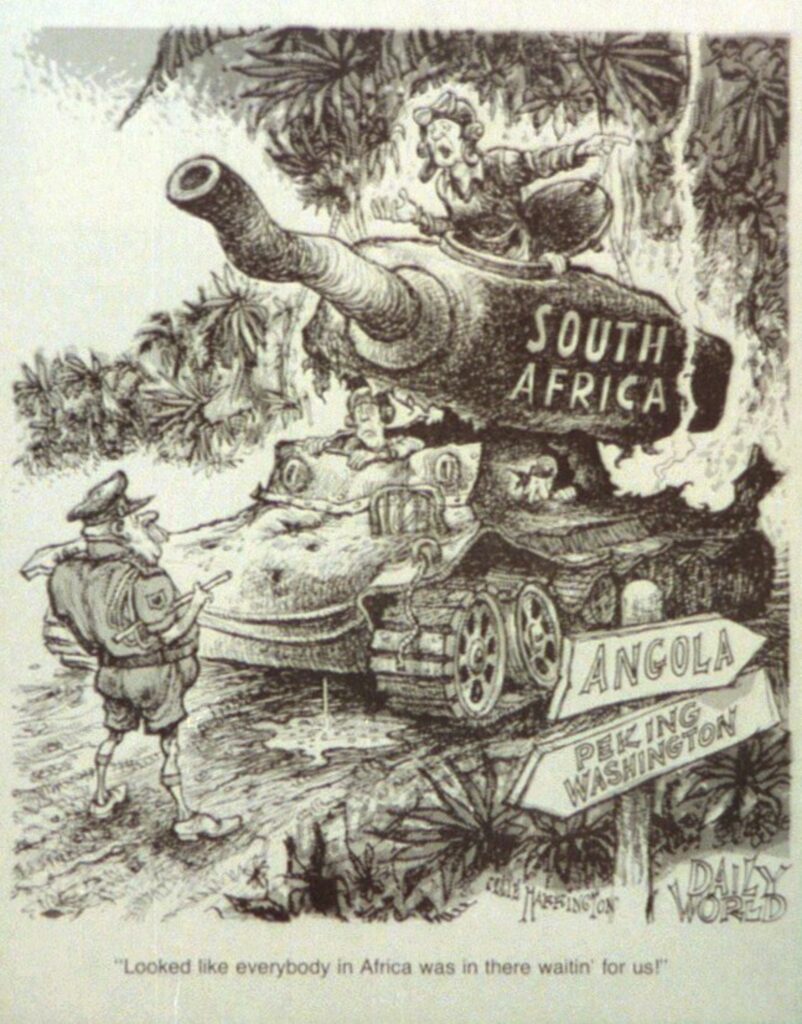
After that, assignments began to flow steadily. Harrington became a regular contributor to many of the best-known black newspapers in the United States, including the New York Amsterdam News, the Pittsburgh Courier, and the Baltimore Afro-American. In 1935, Harrington began drawing Dark Laughter— a single-panel cartoon—for the Amsterdam News. In December of that year, Harrington’s most famous character, Bootsie, made his debut in that strip.
Bootsie was an ordinary African American man contending with racism in everyday American society. Bootsie became immensely popular, and Harrington’s name was quickly added to the list of top black cartoonists in the nation. The Bootsie character continued to appear in various publications for nearly three decades.
Harrington enrolled in Yale University’s School of the Fine Arts in 1936, to study painting and art history while continuing to support himself through his cartooning. He earned his BFA degree from that institution in 1940. In 1942, Harrington landed his first full-time job, working as art director for The People’s Voice, a progressive weekly newspaper founded by clergyman Adam Clayton Powell, Jr. He brought Bootsie and Dark Laughter with him and contributed editorial cartoons and miscellaneous illustrations as well.
The following year, Harrington left the Voice to work primarily for the Pittsburgh Courier, where his duties were more varied and challenging. At the Courier, he introduced Jive Gray, an adventure comic strip that addressed World War II from an African American perspective.
In January of 1944, the Courier sent Harrington abroad to cover the war in North Africa and Europe. While reporting in Italy, he met the National Association for the Advancement of Colored People (NAACP) executive Walter White. White was so impressed that after the war’s end, he invited Harrington to develop a public relations department for the organization.
Harrington took on the job in 1946, and late in the year he debated U.S. Attorney General Tom Clark on the topic of “The Struggle for Justice as a World Force.” During the debate, he took Clark to task for failing to come up with a single conviction despite a much-publicized massive federal investigation of a lynching in Monroe, Georgia.

The left U.S. to Avoid Witch Hunt
Harrington left the NAACP in 1947 and returned to drawing full-time. During the next few years, he continued drawing Bootsie, as well as a steady stream of political and sports cartoons. He also tried his hand at book illustration, including the pictures for the 1950s The Runaway Elephant, a well-received children’s book by Ellen F. Tarry. Around this time, Harrington came under the scrutiny of the House Un-American Activities Committee, whose hunt for communists was reaching the peak of its fervor.
Harrington’s visibility as a spokesman for the NAACP—and the aggressive position on civil rights he had taken while there—had made him a magnet for the committee’s attention. To avoid discrediting the NAACP by having a former official branded a communist, Harrington opted to leave the country in 1951.
Paris, at the time of Harrington’s arrival, was bustling with black American expatriates. The community of black intellectuals and artists that had gathered in the city included the likes of writers Richard Wright and Chester Himes and painter Beauford Delaney. The center of the group’s social life was the Café Tournon. In his autobiography, My Life of Absurdity, Himes described Harrington as being “the center of the American community on the Left Bank in Paris, white and black, and he was the greatest [fictional womanizer] Lothario in the history of the whole Latin Quarter.”
During his stay in Paris, Harrington supported himself primarily by contributing cartoons to the Courier and the Chicago Defender through the mail. His American presence was also maintained by the appearance of an anthology of his cartoons in 1958. The book, Bootsie and Others, was published by Dodd, Mead & Company, and included an admiring introduction by Langston Hughes.
The happy calm in Paris came to a jarring end with the sudden death of Wright—with whom Harrington had become extremely close—in 1960. Shortly thereafter, Harrington wrote an article for Ebony entitled “The Last Days of Richard Wright,” in which he outlined the suspicious circumstances surrounding Wright’s death. With Wright gone, Paris was no longer as appealing to Harrington, and in 1961, he traveled to East Berlin. There he explored an offer from Aufbau Publishers; they wanted Harrington to illustrate a series of English-language classics. While Harrington was in East Berlin, the wall dividing the city was erected, and he unexpectedly found himself trapped there without the proper paperwork to leave.
Settled Behind Iron Curtain
Rather than struggle to find a way out of East Germany, Harrington realized that his prospects for work there were quite good, so he settled in to stay. The communist audience appreciated his political cartoons dealing with racism and poverty, and he became a regular contributor to some of East Germany’s most popular magazines, including Eulenspiegel and Das Magazine.
Harrington’s take on U.S. affairs especially appealed to East German students and intellectuals, and he developed a loyal cult following among those groups. In 1964 Harrington met Helma Richter, a radio journalist, and the two eventually got married and had a son, Oliver, Jr. Bootsie was finally put into retirement in 1963, but Harrington continued churning out political cartoons for a variety of publications.
Later in the decade, Harrington was invited to provide drawings and cartoons for the New York Daily World, a communist newspaper formerly known as The Worker, after a friend of his had been named as its new editor. The Daily World published a collection of Harrington’s work called Soul Shots in 1972. To celebrate the release of that book, Harrington made his first visit to the United States since leaving the country more than 20 years earlier.
He also gave a series of lectures during the trip. Upon his return to Europe, Harrington wrote “Look Homeward, Baby,” a piece for Freedomways magazine in which he compared how America looked to him upon his return to his memories of 1940s Harlem.
Through the rest of the 1970s and the 1980s, Harrington drew cartoons in East Germany while remaining almost completely obscure in the United States. The exceptions were occasional essays published in left-wing journals. These included two reviews of books by fellow black cartoonists for Freedomways:1974’s “Through Black Eyes” and “Like Most of Us Kids” in 1976.
Renewed American Interest
Harrington did not set foot on American soil again until 1991 when he was brought over by Walter O. Evans, a Detroit surgeon, and collector of African American art. During that visit, Harrington delivered a speech at Detroit’s Wayne State University called “Why I Left America,” which, as one would suspect from the title, detailed the circumstances under which he first emigrated 40 years earlier. His visits have been more frequent since then.
Harrington’s life and work were the subjects of two different books published by the University Press of Mississippi in 1993. Dark Laughter: The Satiric Art of Oliver W. Harrington is a collection of cartoons spanning his entire career. Why I Left America and Other Essays contains nine articles written by Harrington throughout his career. It also includes a foreword by Julia Wright, Richard’s daughter. Both books contain introductions with detailed biographical information by M. Thomas Inge, a professor at Randolph Macon College in Virginia.
The publication of those two books revived interest in Harrington’s career among some sectors of the American public. In 1994, Michigan State University invited Harrington to spend a semester as an artist-in-residence at its school of journalism. During his semester there, Harrington led a seminar that focused on the role political cartoons play in journalism. Harrington began the spring semester course by “showing students that political cartoons and journalism is all the same thing and has been for several thousand years,” he told a reporter for Emerge.
Despite his newfound status in the United States, Harrington chose to continue living in Germany, and he returned there following his stint at Michigan State. The rediscovery of his art by the American mainstream art audience has sparked new interest in the work of other African American cartoonists as well. As Professor Inge noted in his introduction to Dark Laughter, “The story of the African American cartoonist and the American newspaper is largely an invisible history which remains to be recovered.” The re-emergence of Oliver Harrington’s six decades of work will likely serve as an important step toward that recovery.
Selected writings
Nonfiction
Why I Left America and Other Essays, University Press of Mississippi, 1993.
Cartoon Anthologies
Bootsie and Others, Dodd, Mead & Company, 1958.
Soul Shots, Daily World, 1972.
Dark Laughter: The Satiric Art of Oliver W. Harrington, University Press of Mississippi, 1993.
Sources
Books
Harrington, Oliver W., Why I Left America and Other Essays, University Press of Mississippi, 1993.
Dark Laughter: The Satiric Art of Oliver W. Harrington, University Press of Mississippi, 1993.
Periodicals
Editor & Publisher, November 28, 1992, p. 28.
Emerge, May 1994, p. 14.
New York Times Book Review, December 19, 1993, p. 20.
Publishers Weekly, September 6, 1993, p. 75.
FAQs (Frequently Asked Questions) about Ollie Harrington
Who was Oliver Wendell Harrington?
Answer: Oliver Wendell Harrington was an American cartoonist and a vocal advocate against racism and civil rights in the United States.
What is Oliver Wendell Harrington best known for?
Answer: Harrington is best known for his influential cartoon works, notably “Dark Laughter” and “Bootsie,” addressing racism and civil rights issues.
Where and when was Oliver Wendell Harrington born and died?
Answer: Harrington was born on February 14, 1912, in Valhalla, New York, and passed away on November 2, 1995, in Berlin, Germany.
What was Harrington’s educational background?
Answer: Harrington graduated from DeWitt Clinton High School in the Bronx in 1929. He later attended Yale University, earning a Fine Arts degree in 1940.
What notable works did Oliver Wendell Harrington create?
Answer: Harrington created “Dark Laughter,” later retitled “Bootsie,” a cartoon addressing racial issues. He also published the adventure comic strip “Jive Gray.”
How did Oliver Wendell Harrington contribute to the NAACP?
Answer: Harrington was employed by the NAACP after World War II to assist with a public relations campaign for returning Black veterans. However, he left the organization in 1947 due to differing political views.
What role did Harrington play in the civil rights movement?
Answer: Harrington was an outspoken advocate for civil rights, using his cartoons to expose racism. He published “Terror in Tennessee,” revealing post-WWII lynching violence in the South.
Why did Oliver Wendell Harrington move to Paris in 1951?
Answer: Harrington moved to Paris in 1951 to avoid government scrutiny, facing increased attention from the FBI and the House Un-American Activities Committee.
Why did Oliver Wendell Harrington seek political asylum in East Germany in 1961?
Answer: Harrington suspected foul play in the death of his friend Richard Wright and believed in harassment by the American embassy. In 1961, he sought political asylum in East Germany.
Where did Oliver Wendell Harrington spend the last years of his life?
Answer: Harrington spent the last three decades in East Berlin, Germany, where he continued his cartooning career and gained a cult following.
This post was created with our nice and easy submission form. Create your post!

